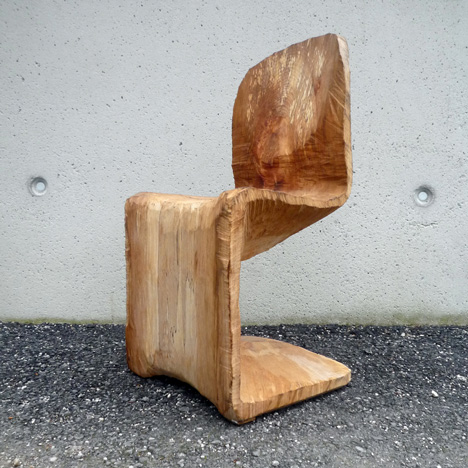
Wooden Panton by Matthias Brandmaier
Design student Matthias Brandmaier spent three days in the woods carving a replica Verner Panton chair out of a tree trunk using a chainsaw.
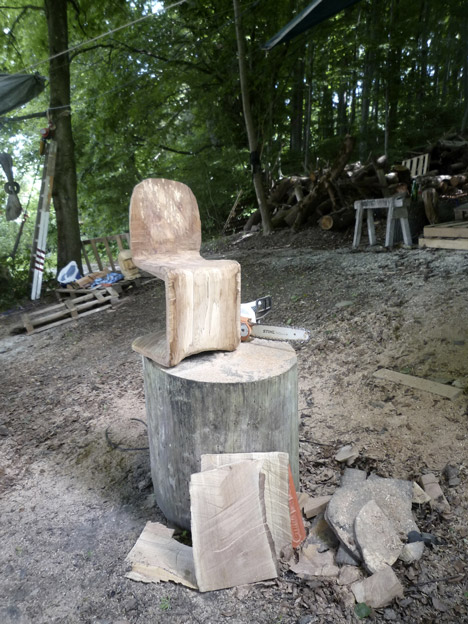
The chair, which weights 30 kilograms, is carved from a single piece of beechwood, but Brandmaier claims it is comfortable to sit on: "Most time was spent on carving the seat and the backrest to guarantee a comfortable chair," he says.
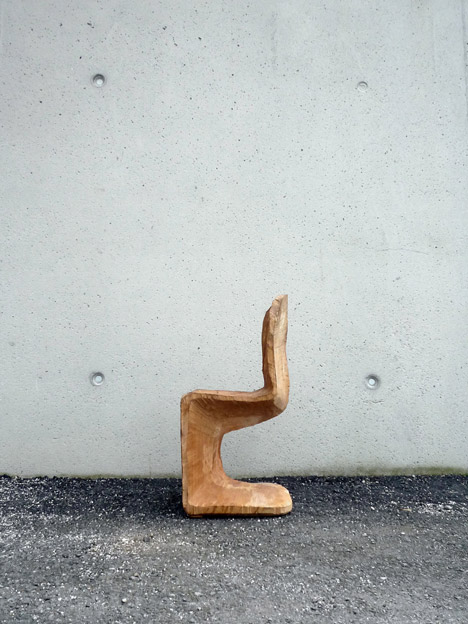
Reproducing the form of the classic moulded-plastic Panton Chair in solid wood "seemed a stupid and very uneconomic idea at first," Brandmaier admits, but he did it in order to explore what would happen when a product is reproduced in a different material.
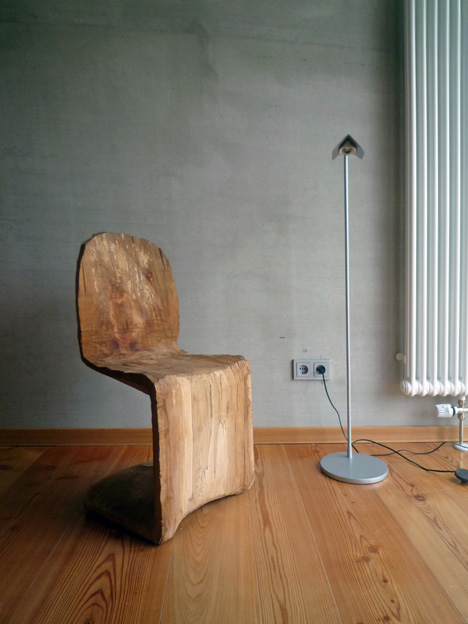
"It was meant to be a unique piece of furniture and I planned in advance how to use the rest of the wood in other objects and sculptures," Brandmaier says, adding that the copyright of the original chair was not a concern to him. "The translation to the material wood is of course very opposite to the thin plastic shells of the 60s and required a very different structural form, from where a new chair evolved. Therefore I did not worry about the copyright."
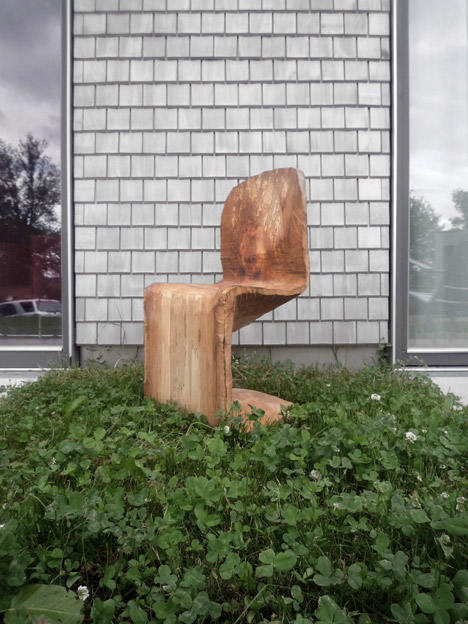
"As this approach seems pretty wasteful on the material, this method of production is of course only possible in a small scale manufacturing, where the redundant wood was used for other objects and sculptures," adds Brandmaier, who is a student of architecture at the Academy of Fine Arts in Vienna. "The Wooden Panton is a single object, which explores the change of forms according to different materials."
The classic S-shaped Panton Chair, designed by Danish designer Verner Panton, went into production with Vitra in 1967. The chair, featuring a cantilevered seat and made from a single moulded component, has been made of various plastics over the years. It was originally made of fibreglass-reinforced polyester, then from polystyrene and later polyurethane. Today the chair is moulded in polypropylene.
Besides his architectural studies, Brandmaier produces unique pieces of furniture from found objects combined with wood, steel and concrete. See more of his work on his website: www.matthiasbrandmaier.de
See all our stories about chair design »